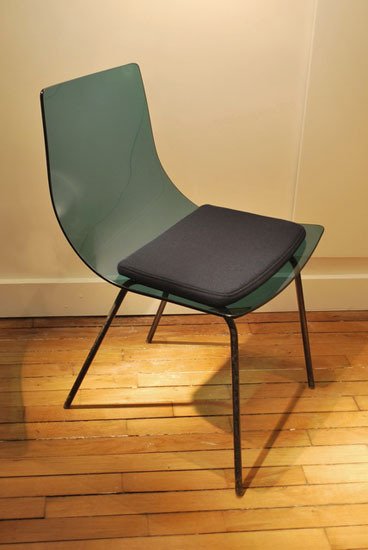Michel Blondeau
Michel Blondeau was a French designer and interior decorator trained at the École Boulle. Part of the post-war generation that redefined the role of interior architecture, he developed a practice at the crossroads of industrial production, commercial display, and exhibition design. From 1947 onward, he collaborated with leading French manufacturers such as Saint-Gobain and the Boussac group, before specialising in a field then considered pioneering: the design of trade-fair stands and retail environments.
A member of the C.A.I.M. (Créateurs d’Architectures Intérieures et de Modèles), Blondeau was regularly invited as a speaker at professional conferences, notably during the Salon des Arts Appliqués, where he advocated for a rational and functional approach to design—one based on clarity of circulation, visual hierarchy, and the enhancement of the object on display. By the early 1960s, he was recognised as one of the key figures in the development of modern commercial architecture in France, at a time when the shop interior was becoming a new field of experimentation for designers.
Alongside his activity as a decorator, Blondeau also created furniture models, including a rare series of “Sécurit” glass chairs designed in the late 1950s. These pieces, combining industrial materials with experimental construction, reflect his interest in technical innovation and remain highly sought after today among collectors of mid-century design. His work—partly documented, partly forgotten—forms an important yet still understudied chapter in the history of French modernism.

